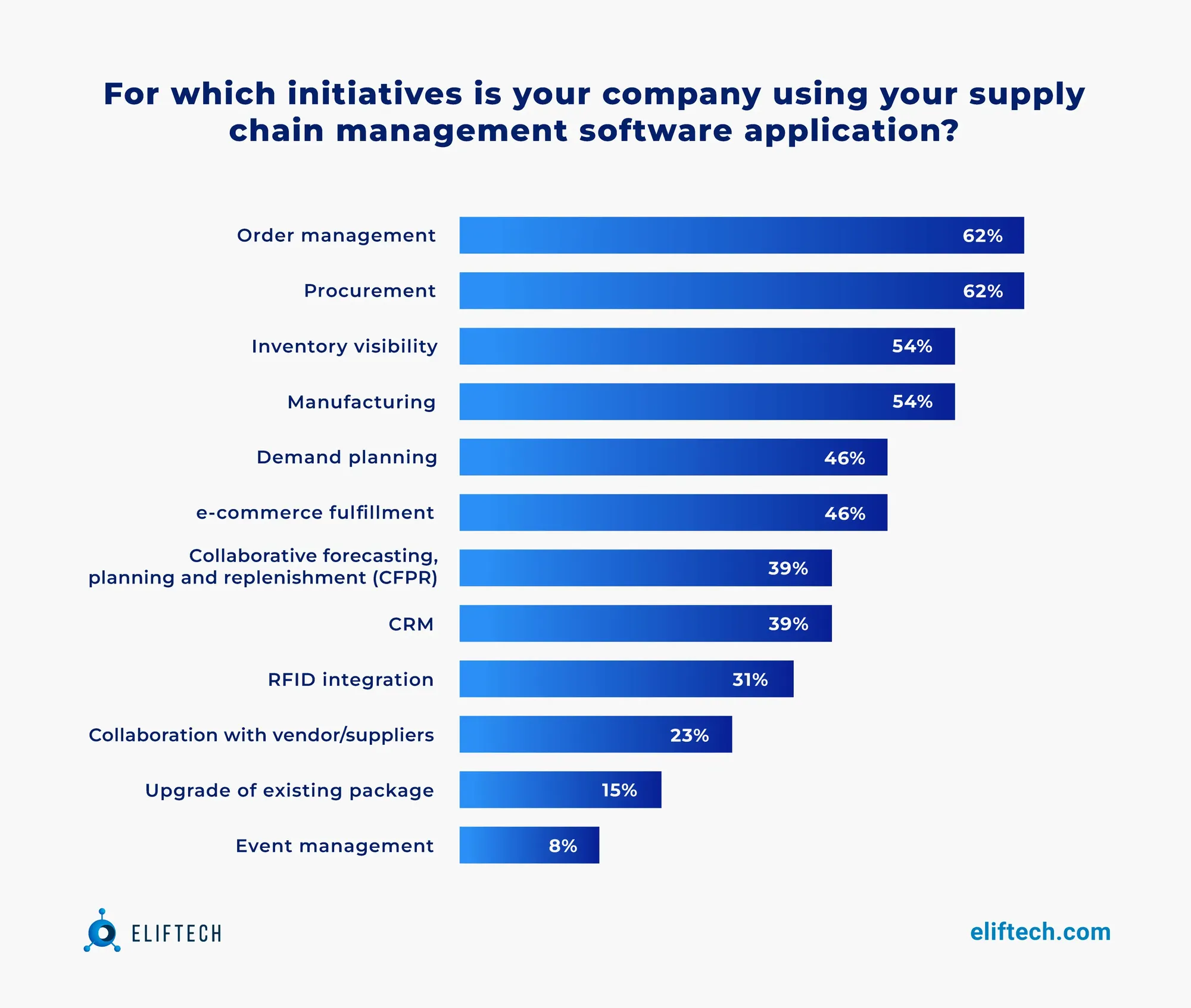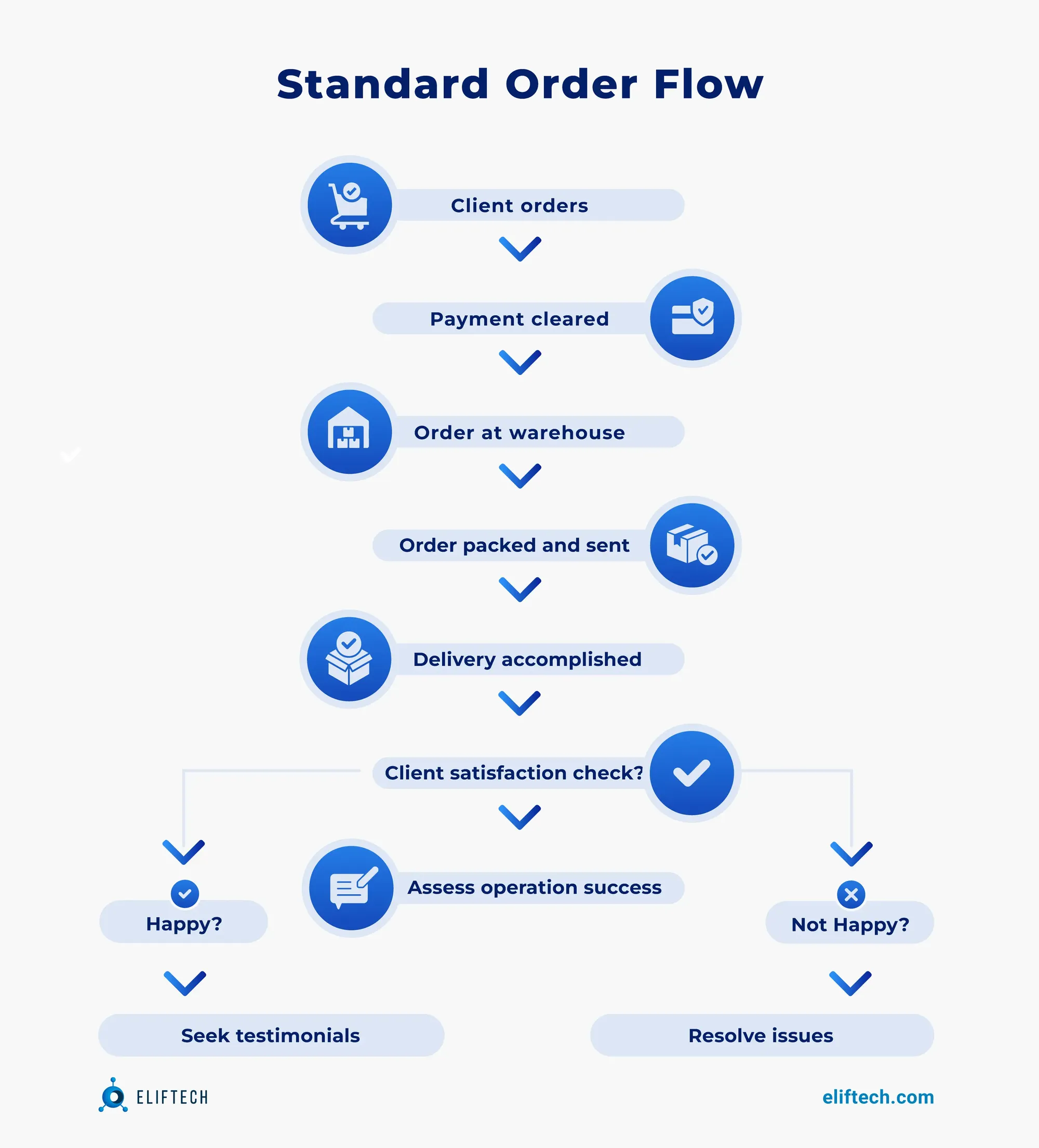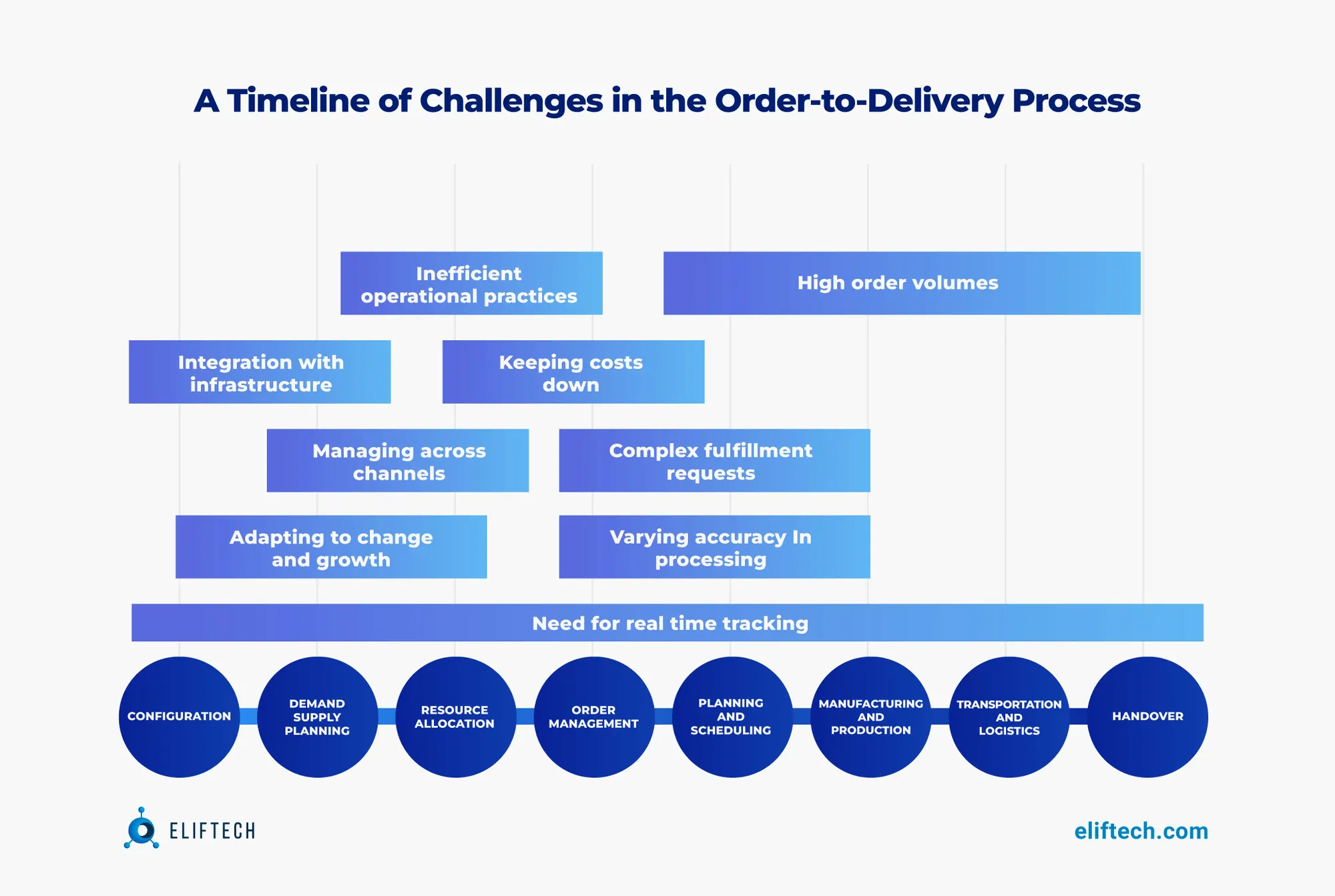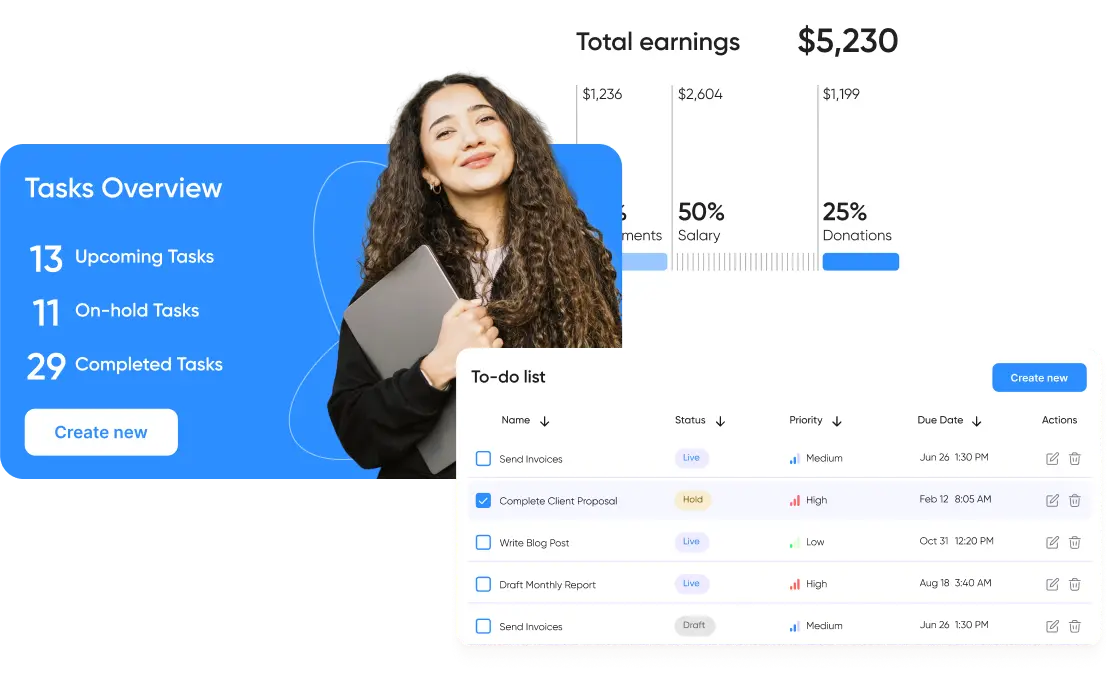Logistics
How Ecommerce Order Management System Improves Order Accuracy and Operational Efficiency
Businesses in both retail and manufacturing industries have somewhat similar supply chain management challenges. Processing orders has become multifaceted and complicated due to shorter order cycle times, an explosion of order and delivery channels, and evolving customer demands, with ecommerce order management system adoption rates soaring.
If each challenge in the order-to-delivery process is a snowball, these snowballs (when unaddressed) can quickly become an avalanche of order mishaps and operational bottlenecks.
Most businesses can't afford to address these challenges one by one, both in terms of time and budget. What they need are fast, modern, and efficient solutions, and that's precisely what ecommerce order management system offers.
In this blog post, we provide facts and insights to help you understand the impact of the main challenges on business operations. We'll also share strategies to guide you toward operational excellence, specifically in the areas of order accuracy and efficiency.
Brief Overview of Order Management Systems (OMS)
Order management is the process of efficiently handling and tracking customer orders from start to finish, involving customers, systems, and suppliers, and it includes various important activities, from taking orders to making sure they're delivered accurately and on time to customers.
Companies with a certain level of technological maturity already have supply chain software applications in place to handle various related tasks, with 62% of them addressing specifically order management.

An Order Management System (OMS) is a software solution designed to streamline and automate the complexities in the order management process. It integrates with various business systems, such as e-commerce platforms, inventory databases, and carriers, to organize order flow.
Here's how it works:

Step 1. Order collection
The typical order process starts when the customer places an order, with various degrees of automation. Fully automated channels include self-service options like e-commerce websites, marketplace platforms like Amazon or eBay, or dedicated apps. Manual methods require customers to place orders in person, over the phone, or via email. Additionally, there are semi-automated channels that provide service bots, touch screens, or automated email forms to assist in the process.
Step 2. Order verification, processing, and recording
Order management system validates, processes, and records orders, checking for customer information accuracy. If there are issues, it may trigger alerts or take predefined actions.
Step 3. Inventory control and routing
One valuable thing that the retail order management system does is real-time inventory tracking. It monitors the availability of products in various locations: warehouses, distribution centers, retail stores, or even suppliers' inventory, helping mitigate stockouts and overstocks.
Step 4. Order shipping and delivery
The ecommerce order management system creates labels for shipping, picks which company delivers, and coordinates the entire shipping process. Customers get a tracking number with order information to follow their order until it arrives at their door.
Step 5. Order entry (optional, depends on OMS type)
When customers place orders and it's time for payment, these transactions are recorded in the company's ERP or accounting software as cash or accounts receivable. After that, the sale is recorded in the ledger.
Thanks to machine learning and past revenue data, the system is capable of automatically producing the required accounting entries for the sale. After that, a bill is created and issued to the client, and when payment is received, it is also noted.
Challenges in achieving operational excellence as you scale
Rising demands and business scaling open the door to potential challenges. Delivering best-in-class experiences and business continuity is becoming increasingly difficult for businesses as it takes time and effort to locate and address them. Here are some common challenges that businesses encounter at various stages of the end-to-end order-to-delivery process as they grow.

Integrating new systems with existing infrastructure
Process stage: Configuration management
Scaling may involve integrating various software systems, such as order management, inventory management, and shipping systems. The same goes for adopting advanced technologies like AI or IoT, which might mean overhauling or augmenting existing systems. Yet, ensuring seamless integration without disruptions is possible but challenging.
One strategic approach for businesses facing these challenges is the implementation of order management software solutions. These solutions can serve as a bridge between existing systems and new technologies. Here is how:
- It easily works with different systems, making integration less disruptive.
- Software for order management keeps all parts of the business up-to-date, which is vital for efficient order processing, inventory management, and shipping coordination.
- It acts as a control hub, making it easier to oversee and fix integration issues.
- As your business grows, this software grows with you, ensuring these integrations stay effective.
Adapting to change and growth in the business environment
Process stage: Configuration management
The ability to adapt to growth goes beyond simply increasing the size of a business. It means dealing with changes in cultural, operational, strategic, and customer-centric aspects. The ecommerce order management system again acts as a valuable tool here. It makes things smoother, provides useful data, helps the business grow without hiccups, works well with other systems, makes customers happier, and reduces risks.
Managing orders and inventory across channels
Process stage: Demand & supply planning
When a business expands to multiple sales channels like physical stores, e-commerce platforms, and online marketplaces, managing orders becomes more complex.
The adoption of new technologies could help in giving a clear picture of orders and ways to streamline and handle them efficiently. Robust management and tracking systems, like those offered by order management solutions, are able to coordinate inventory across these channels as well as solve other associated problems: prevent overselling and stockouts.
Draining resources
Process stage: Resource allocation
The inefficiencies that may have been manageable at a smaller scale can become resource-intensive bottlenecks when scaling. Typical examples include repetitive tasks, redundant processes, lack of real-time visibility, communication gaps, inefficient packaging, etc.
Using automation when it makes sense and embracing advanced technology will help overcome these challenges and save your budget for more important strategic initiatives.
Keeping delivery costs down
Process stage: Resource allocation
As businesses grow and serve a wider customer base, they encounter the challenge of controlling delivery expenses. Scaling up often involves shipping more products to diverse locations, potentially increasing costs.
For example, expanding to new areas may result in longer shipping distances, which can be more expensive. Additionally, modern customers demand efficient and affordable shipping. Falling short of these expectations can lead to financial setbacks.
Effective delivery strategies, coupled with technology-driven solutions, are crucial for profitable delivery operations and maintaining high customer satisfaction.
Varying accuracy levels in order processing
Process stages: Order management, manufacturing & production
Scaling often brings in new staff, systems, and procedures, creating differences in order management. This can result in inconsistent order handling, posing potential issues. As order volumes rise, ensuring consistent quality control becomes more challenging. Errors or discrepancies in orders can lead to customer dissatisfaction, requiring costly corrections and harming a business's reputation.
Maintaining order accuracy and quality standards during periods of growth is essential for sustaining customer trust and operational efficiency.
High order volumes and logistical complexities
Process stages: Planning & scheduling, transportation logistics
More orders mean more data entry, picking, packing, and shipping tasks that can cause logistical complexities. For example, consider this scenario: the number of orders suddenly grows. What happens if your business operations are not efficient enough to manage them?
First of all, team members need to type in customer and shipping details quickly. Overlooking or mistyping critical information can translate into wrong shipments or late deliveries.
Secondly, warehouse staff must navigate through shelves stocked with various products. Inefficient organization can slow down the process, making it difficult to locate items quickly and accurately. This can lead to wrong items being packed, which means more time spent fixing mistakes.
Thirdly, a sudden wave of orders might mess up the shipping plan. If the pickup schedule doesn't match order processing times, deliveries can get delayed.
So, managing a surge in order volumes and handling the resulting logistical complexities requires smart strategies, like efficient management and implementing automation.
Overseeing returns
Process stage: Order management
More orders often mean more returns, too. Handling these returns, checking and restocking items, and sorting out refunds or replacements can complicate the operational puzzle.
Utilizing automation and analyzing returns data can help businesses manage the returns pile-up effectively and maintain customer satisfaction.
Complex fulfillment requests
Process stages: Manufacturing & Production, Order management
As businesses grow, they get various special customer requests, like custom orders or specific packaging. Meeting these individualized demands introduces operational intricacies that require effective communication, streamlined production processes, and rigorous quality control.
For instance, some customers may request specific packaging for branding, gifting, or sustainability reasons. This means the business must adhere to the detailed specifications provided by the customer, including the type of packaging materials, design elements, etc. In this case, quality control checks must be in place to validate that each customized request aligns with the specified requirements. Additionally, you will also need proper handling during transportation, especially if temperature-sensitive items are involved.
Ecommerce order management systems can simplify these complex tasks, enabling businesses to centralize and automate various aspects of order handling. They facilitate real-time customer communication, streamline production tasks, and incorporate quality checks into the workflow.
The need for real-time tracking
Process stages: Demand & supply planning, Resource allocation, Order management, Transportation logistics
Scaling operations require real-time visibility into inventory levels, order status, and the movement of shipments. The ability to access this information instantly is paramount for making timely decisions and optimizing resources.
However, the reality for many businesses is that their existing systems may fail to deliver this essential real-time data. Outdated systems, often designed for smaller-scale operations, can struggle to keep pace with the increased demands of a growing company.
Inadequate systems lead to discrepancies in inventory levels, potentially causing overstocking, stockouts, or inefficient allocation of resources. Outdated systems also cause delays and errors in data, making quick decisions hard. Plus, shipping is tricky for businesses with many locations or global reach when real-time tracking is missing.
Interested in enhancing order accuracy, tracking, and fulfillment efficiency? If one of these scenarios is familiar to you - schedule a consultation with us to explore how we can help.
Types of Order Management Systems
The history of order management illustrates its transformation from simple handwritten notes to advanced technology-driven solutions, versatile and efficient enough to suit a wide range of business needs.
On-premises OMS
On-premises OMS are for businesses that prefer complete control over their order management system. They install and run the order management system software on their own servers. It lets them customize it fully, but they must manage their servers. This is common in companies with strict data security rules or when they already have their servers in place.
Cloud-based OMS
Cloud-based OMS, on the other hand, are hosted on remote servers and accessed via the Internet. This model offers businesses 'pay-as-you-grow' options for scalability, flexibility, and cost-efficiency because it removes the need for on-site hardware and maintenance, which the vendor handles. Cloud order management solutions are great for businesses of any size and can easily grow with your needs, whether you're expanding or handling seasonal changes in orders.
Open-source OMS
Open-source OMS platforms give businesses access to the source code, allowing for customization and expansion. They offer flexibility and can save costs, but using and managing open-source solutions may need technical know-how.
Standalone OMS
Standalone order management solutions are solely focused on order management. They don't heavily integrate with other business systems like ERP, CRM, finance software, etc. Instead, they benefit businesses looking for a dedicated solution to efficiently handle orders and tracking without the complexities of broader system integration.
Custom OMS
Custom order management software is created to match a business's precise requirements. They can be built from scratch or based on existing OMS frameworks, providing a highly personalized way to manage orders. Although they offer personalized solutions, they come with a substantial investment in development and ongoing maintenance.
If a business chooses order management software development in this manner, the most optimal choice for them would be to contact proficient custom software developers who are masters in this area.
Enterprise OMS
Enterprise OMS is engineered to handle large-scale operations and complex business settings. It usually comes with advanced functions like supporting multiple channels, smart order routing, and smooth integration with other high-level systems like ERP, CRM, finance, and other business software. It's a go-to choice for businesses with extensive operations and diverse customer interactions.
Choosing the Right OMS: Essential Software Features to Look For
Once you've decided which specific type of online order management system suits your situation, it makes sense to consider the features to include. While some of these features may be more specific and not mandatory, we will list the ones that we recommend paying special attention to.
Order Tracking and Status Updates
An advanced order tracking system ensures everyone stays informed. When a customer orders something, the order management system software creates a unique code to follow that order's journey. Customers can easily check their order's progress online or receive updates via email or text, so they know when it's arriving.
Inside your company, your team can see the same information, which allows them to assist customers and troubleshoot issues. If there are hiccups like delays, the system raises a flag, prompting your team to fix the problem. Additionally, the OMS's tracking feature collects data about order progress, which can be used to improve and enhance overall efficiency.
Inventory Visibility
This is a critical feature of the ecommerce order management system that gives you an up-to-the-minute view of product availability and status. It works by gathering data from different places (like your stores and warehouses) and storing it all in one location. So if you sell through various channels (e.g., online, in-store), inventory visibility ensures that all sales channels have access to the same stock information.
This makes it easier for you to keep your word to customers about when their orders arrive, ship them to the right places, and even make timely preparations to ensure you never run out of in-demand products.
Order Routing and Allocation
This feature is based on advanced order routing algorithms. It intelligently assesses elements such as how close customers are, product availability, and shipping costs during order processing. By choosing the most suitable fulfillment center, you will not only ensure faster and more affordable delivery but also minimize logistical complexities, which will ultimately increase your overall operational efficiency.
Order Customization and Configurability
We can think of these features as a set of tools that let you adjust how your OMS works to suit different types of orders and changing requirements. This adaptability makes order management software more efficient and responsive to your specific needs. Typically, such features are crucial for businesses that handle diverse order types, from standard product orders to custom configurations, subscriptions, or bundles.
For example, let's say there's a small online store selling phones. Sometimes, customers want to add accessories like phone cases, chargers, or headphones to their order. If the store's system doesn't have this feature in place, they'd have to handle these requests manually. This could lead to mistakes and delays. But if they have this feature, it's like having a magic button that lets customers easily add extras to their order, making everything faster and smoother.
Integration Capabilities
Integration capabilities ensure all critical business systems, like OMS, WMS, WCS, and WES, work together like a well-coordinated team. They work together to ensure efficient order fulfillment, accurate inventory management, and customer satisfaction.
These systems can talk to each other seamlessly and exchange information in real-time. When a customer orders through the OMS, it talks to the WMS to check if the products are in stock. If they are, the WCS ensures that the items are picked and packed correctly, and the WES oversees the entire process to ensure efficiency. If any issues arise, like a product running out of stock, these systems communicate to find a solution.
Returns and Exchanges Management
When customers want to return a product or exchange it for something else, this feature makes the process hassle-free.
It works simply: when a customer initiates a return or exchange, the system guides them through the process, asking for necessary details. It then generates a return shipping label, making it easy for the customer to return the item. Once the return is received, the system checks the condition of the product and processes the refund or exchange accordingly.
Moreover, this feature also keeps track of return trends, helping you identify recurring issues with products and offering valuable insights for improvement.
Cross-Channel Capabilities
Whether you're selling online, in physical stores, or through various mobile platforms, cross-channel capabilities ensure everything works together seamlessly. For example, if an item is sold online, it instantly updates the stock available in your physical store, preventing situations where you sell the same product twice. This not only prevents overselling and stockouts but also enhances your overall customer service by ensuring customers get accurate product availability information no matter where they shop.
Reporting and Analytics
This feature gathers data on things like order processing times, customer preferences, and sales trends. The online order management system then transforms this data into easy-to-understand reports and visual charts. These insights help you identify patterns and spot bottlenecks in inventory, marketing, order management, etc.
Moreover, advanced analytical tools can directly address challenges associated with demand planning and quality checks.
The importance of an order management system
Enhancing efficiency and order accuracy by automating manual tasks are not two reasons why OMS is significant. Order management software is vital today because e-commerce is booming, and customers expect more flexibility, specialized handling, and better service.
However, the modern e-commerce order management system goes even further. Distributed order management systems are in high use today since they allow businesses to efficiently fulfill orders shipping from multiple locations and handle returns by mail or in-store, all while keeping costs in check. Even businesses operating through a single channel can find value in an OMS, as it consolidates essential tasks into a unified digital platform. Plus, as your company grows, whether in sales channels or sales volume, OMS easily scales with your business.
In summary, the benefits of an OMS include:
- Accurate order delivery
- Reduced errors in data capture
- Automated data capturing
- Handling repetitive processes
- Automated order processing
- Reduced operational costs
- Real-time operational visibility
- On-time delivery
- Scalable order management
- Data-driven decisions
Conclusion
To thrive and expand your business, you must accept orders from different sources. No matter where or how orders come in, customers should always have a great experience, and your inventory and fulfillment processes must be efficient and error-free.
Ecommerce order management system provides the necessary structure and capabilities to meet the demands of today's dynamic businesses while addressing challenges and enhancing order accuracy and operational efficiency. It does this by making processes smoother, improving tracking, enabling real-time communication, and automating tasks.
These platforms are especially powerful when they solve your unique business challenges, and that's a key job for your development partner. If you're still in the process of choosing one, take a closer look at our comprehensive list of offerings:
- Automated order management and tracking
- Vehicle tracking
- Enhanced delivery efficiency
- Transparent real-time communication within your organization
- Accelerated order fulfillment
- Efficient inventory management
- Insightful data analytics
- Seamless integrations with critical business systems
Let's connect and explore how our custom order management software solutions can drive your business efficiency.
Browse our case studies and get actionable insights to drive your success
See more
